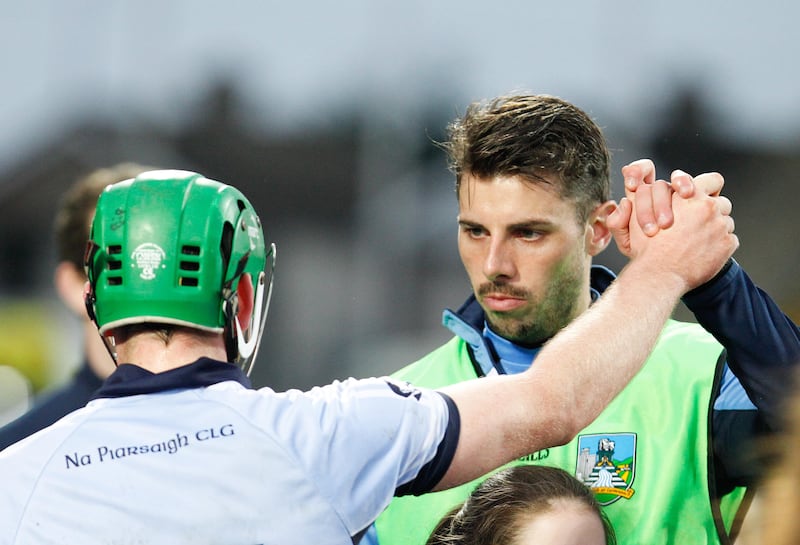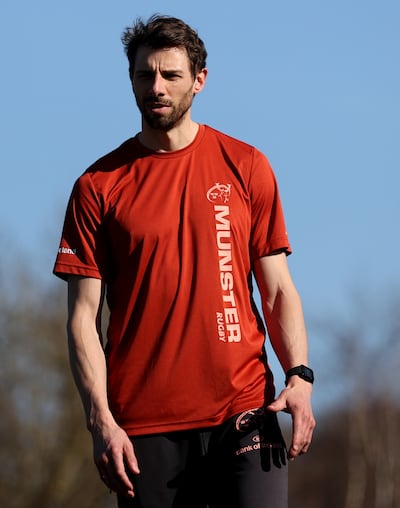A photo of the keepsake he had left behind several years ago at Leinster Rugby’s training base in Dublin popped up on David Breen’s phone recently – a familiar battered hurley.
It has become something of a trademark parting gift the former Limerick captain likes to leave when moving on from clubs where he has worked as a physiotherapist.
He tucked one away as a souvenir for Wasps too, while Pep Guardiola should not be surprised if he stumbles across a carved piece of ash resting against a wall in Manchester City’s facilities.
Most recently, Breen worked with Munster Rugby’s first team for two years but he moved back to the UK in July after accepting the position of senior rehab physiotherapist with Harlequins. It has been a career less ordinary.
READ MORE
He started his new role with the London-based outfit just days before Limerick’s All-Ireland SHC final victory over Kilkenny, and so the former Treaty forward watched his county make history from a pub in Twickenham.
“I just couldn’t arrange it to get off and fly back in time,” he says.
Breen retired from intercounty hurling at the end of the 2015 campaign, walking away with a Munster medal mined from 2013. In 2016, alongside his brothers Kieran and Adrian, he won an All-Ireland club medal with Na Piarsaigh, scoring 0-2 in the final win over Cushendall.
At the time Breen was head physio with the Leinster Rugby Academy – working with, among others, Joey Carbery and Garry Ringrose. He joined Wasps later that year where he spent four seasons with their first team.
Then in 2020 he moved to Manchester City, working with the Premier League club’s elite development squad.
“It’s on another scale completely,” says Breen. “It’s even a different beast to other English teams because Manchester City is the flagship club of the City Football Group – which owns several clubs around the world.”

Breen worked with City’s emerging academy players, many of whom have since progressed to play in the Premier League – including Cole Palmer who has just joined Chelsea for a transfer free of over €52 million.
“Where I was working, with the under-23s, there was a separate staffing department called the loans group,” recalls Breen. “They would purely focus on players who were out on loan across the world.
“If a player was at one of the feeder clubs, then staff would be sent out there to upskill the clubs in best practices. You definitely got a sense you were in a completely different ball game.”
Hurling was always his game, though. Na Piarsaigh are in action on Saturday evening against Doon in Bruff and, while Breen’s days at that level are behind him now, he will be lining out at TUS Athlone earlier in the afternoon as a keynote speaker at the GAA’s Sports Medicine and Sports Science Conference. The gathering will focus on lower limb injuries.
“Rugby is essentially a collision sport, it’s different to soccer and GAA which are essentially evasion sports,” explains Breen. “They are contact sports, but you are trying to evade opponents.
“You also must cover a lot of ground at high speed. Soccer, Aussie Rules, GAA, they are similar in that regard and players pick up similar injuries, predominately lower limb ones.”
Lower limb traumas are the most common category of injuries in the GAA. In relation to the GAA’s injury benefit fund, the report from October 2021 to September 2022 shows knee injuries were the most frequent – 2,106 (1,303 of which occurred in adult football). There were 677 ankle injuries, 508 leg, 342 thigh, 149 foot. Shoulder (617) were the only non-lower limb injuries in the top bracket.
“We are a little bit behind around injury epidemiological research in the GAA,” says Breen. “But there is some good work starting to be done on it, recording injuries more accurately and sharing that information on a centralised database.

“That is the first step to understanding what your typical hurling and Gaelic football injuries are. Then you can put steps in place to mitigate against those and try bulletproof guys as best you can.”
But as Ephie Fitzgerald highlighted in these pages during the week, the professional demands now placed on amateur intercounty players is another area of concern in terms of injury.
Breen admits players in English rugby and soccer clubs find it difficult to get their heads around the concept of how GAA intercounty players operate. If the huge amount of training is the haystack, finding time for recovery is the needle. Breen believes education is the key.
“The smarter coaches will put proper value on recovery, they will know when to push and when to pull back,” adds Breen.
“Issues arise when you have inexperienced staff or coaches that just want to ‘go, go, go’, or have a kind of ‘if they break, they break’ attitude. That just leads to problems.
“The best you can do is improve understanding in terms of training and recovery, so those involved know that sitting in a car for an hour driving home is not recovery, sitting in an office from 9-5 is not recovery, standing in a classroom teaching is not recovery. It’s just acknowledging that and planning for it.”
Nobody in Limerick was planning for the hurling riches which have poured through the county in recent years, creating fields of gold along the Shannon.
Breen was one of those who felt something good was coming, but five All-Ireland titles in six years was too wild to even have been dreamt up during inebriated bar-counter chatter.
“There was so much good work going on at underage and some really good talent coming through,” recalls Breen, who also helped out with the Limerick medical team in recent seasons.
“Graeme Mulcahy and Nickie Quaid would have been involved when I was there, and even back then there would have been a feeling we had a good team but we just needed a little bit extra to get all the pieces in place.
“John Kiely was perfectly placed to come in and take over, they were able to get some visionaries in the dressingroom to coach the team and everything just followed.
![David Breen in action against Waterford in 2011. 'I always felt the potential was there [in Limerick hurling] but I never thought they’d be as successful as they have been. Long may it continue.' Photograph: Lorraine O'Sullivan/Inpho](https://www.irishtimes.com/resizer/v2/ONF5WIR66ZBCDPFFZ3HY2BMEO4.jpg?auth=79ea2ef1cbb38eea82ded1312a5348f56bcace97a155053aeeaa7988449df3aa&width=800&height=590)
“I always felt the potential was there, but I never thought they’d be as successful as they have been. Long may it continue.”
His time with Munster ended on a successful note too, with the club capturing the URC in May. His partner, Emma Farquharson, is from London, and when an opportunity arose for Breen to work with Harlequins, they raised anchor once again.
The last few weeks have been a haze of starting over, selling a car in Limerick and buying a new one in London. Moving boxes. Moving houses. Moving lives. As for the hurleys? Well, they’re on the way.
“I like to bring a hurley to every club I’ve worked in and then it stays there after I go,” smiles Breen.
“Some of the lads in Leinster sent me a picture of one I’d left, it’s a bit of a relic at this stage, with graffiti all over it, but it’s still there.
“I’m shipping the hurleys over, so hopefully there will be one sitting in the Harlequins gym shortly.”
David Breen, a trailblazing physiotherapist these days. But a hurler, always.
The Gaelic Games Sports Medicine and Sports Science Conference will take place in TUS Athlone on Saturday, with registration beginning at 9.15am. Among the keynote speakers are David Breen, Ian Jeffreys, Dr Ronan Kearney, Prof Kirsty Elliott-Sale, Dr Enda White, Jack Hickey, Dr Joe Jordan, Jessie Barr.
















